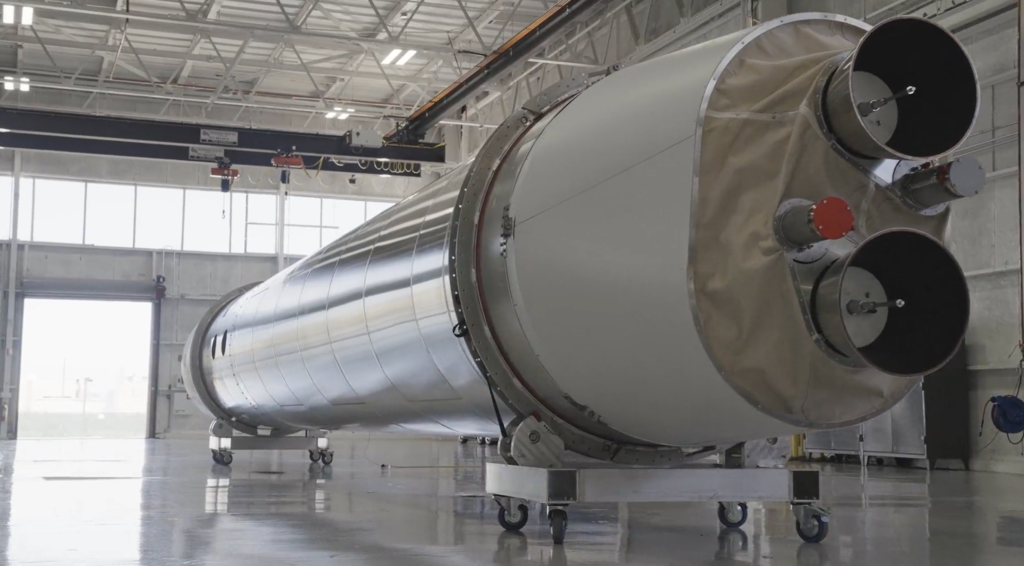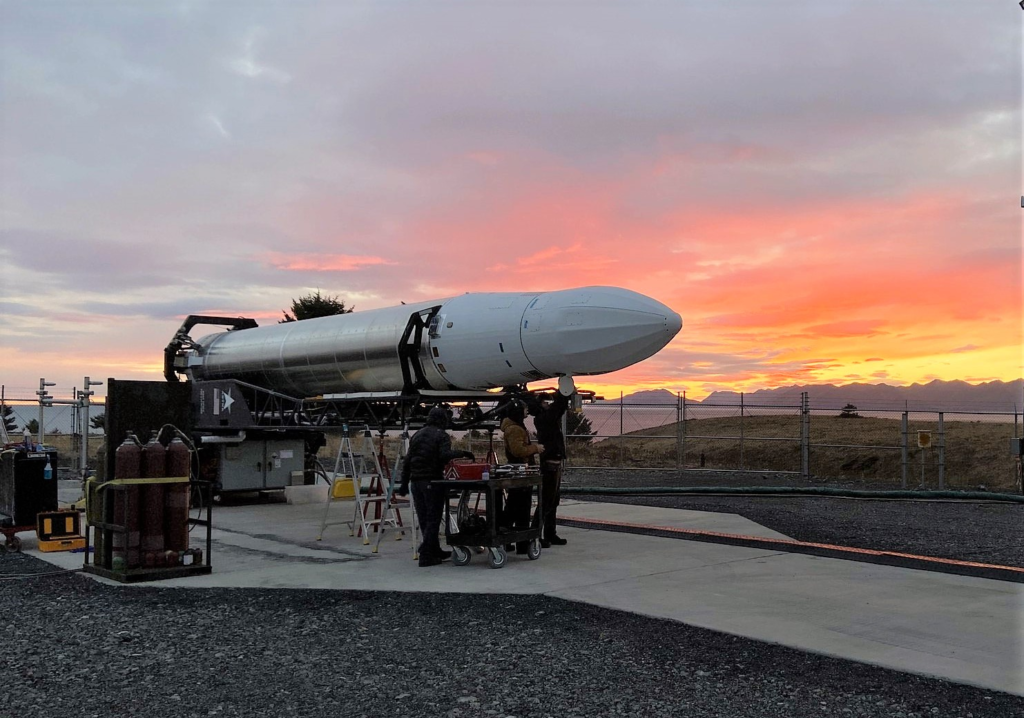
Astra Space Prepares For The First Launch of Rocket 4
Astra Space has had an eventful history with some successful launches and a few not so successful missions as well. These failures eventually led the company to cancel the Rocket 3 line and go to the drawing board. The plan was to create a new rocket with a different manufacturing approach, engines, core components, etc.
Named Rocket 4, in the past few months, Astra has been making some significant progress as they continue to work toward a maiden flight. This work includes tanking tests, engine static fires, and Rocket 4 mock ups, just to name a few. Not to mention the recent presentation held by the company that gave more insights into this project and Astra’s plan with this rocket.
Despite the problems that Astra has run into so far, they are confident that Rocket 4 will be a completely new and improved system capable of whatever the market demands. Here I will go more in-depth into the progress on Rocket 4, when we can expect a launch attempt, what the future holds for Astra, and more.
Rocket 4 Progress

One of the first big recent announcements was a new partnership with rocket engine company Ursa Major. In this case, Astra will no longer be working on the upper stage engine of Rocket 4. Instead, they have completely outsourced the work to a company whose sole purpose is to create high quality rocket engines. Looking at past launches, there were a few different examples of problems related to the upper stage and specifically the upper stage engine. The goal of this partnership is to allow Astra to focus on other aspects of the rocket while Ursa ensures they provide a capable and reliable engine.
The specific engine named the Hadley ITV, is a 6500 pound thrust engine and is an upper stage version of the company’s Hadley engine. Designed to operate in a vacuum and has a restart capability to support that. During the Spacetech day presentation just over a week ago, Astra CEO Chris Kemp was quoted saying, “We’re really excited to announce that partnership because it allowed our team to focus all of our energy on the first stage engine and the rest of this very complex system.”
In addition to the development of the upper-stage engine, there was a lot of talk surrounding the factory and changes made to the manufacturing process. Astra calls it the Rocket Production line which was only just completed. Kemp commented, “It takes a coil of aluminum on one side of the building and it processes it through various stages and rocket stages comes out the other side of the machine. This will allow us to drive the cost of the primary structure of the vehicle down like a giga factory presses drive the cost of the vehicle down, literally pressing primary structures out of sheets of metal and taking rolls of metal and turning them into the tanks of the vehicle” he said. This new system will be applied to Rocket 4 and is said to be capable of producing up to 1 rocket per day.
They also announced that they doubled the capacity of their shop, built new test stands, a quality control lab, and are testing engines much more. Most importantly, last year when Astra revealed the new Rocket 4 launch vehicle, they stated that test flights would begin in 2023. In regard to this, Chris Kemp said, “The team knows how critical that we return to the pad and test this system, so we are working tirelessly to drive towards test flights by the end of the year.” This being said, he proceeded to talk about the company’s new focus on success rather than schedule. In other words, they would rather take their time and be successful than rush and fail to deliver the mission payloads. This suggests that the first launch of Rocket 4 could be closer to early 2024 rather than late this year.
At the very end of the presentation, they revealed a full Rocket 4 on display. The rocket is a combination of qualification and development hardware. This was the first time they did a fit check for the Rocket 4 structure. The first stage engines will be used for qualification, and the upper stage engine is already qualified for flight. The upper stage tank was the first tank build, and much more. This specific rocket won’t fly but it’s a good first step for the company.
Astra’s Plan

Already this year there have been a few important tests on both the structure and main engines of Rocket 4. Starting in January, they performed a pressure test on a new tank design. Test Tank 1 met all testing objectives and allowed the team to move into qualification tank builds of both the first + upper stage which now shares a common size. Then that same month Astra announced the Rocket 4 first stage engine completed a full mission duty cycle of 175 seconds. Lastly, in March, they completed the first hot fire using the thrust vector control (TVC) system for Rocket 4’s first stage engine. The TVC is the mechanism that allows us to control the direction of the thrust for the rocket used by our Guidance Navigation Control (GNC) systems.
Astra points out that Rocket 4 builds on the heritage, flight-proven designs, and manufacturing techniques of hundreds of subsystems demonstrated during the successful orbital flights of the 3 series rockets, but there are several key changes to the Rocket 4 architecture. Rocket 4 will stand 62 feet (19m) from tip to tail, with a total diameter of 6 feet (1.8m). This overall size increase allows the vehicle to carry greater volumes of propellant, and in turn, deploy significantly more payload mass – with a target payload capacity of 600 kg to mid-inclination 500 km low Earth orbit over the course of the product lifecycle.
Rocket 4’s increased diameter also provides an increase in the volume available for customers’ spacecraft. This increased fairing was designed to fit one ESPA Grande spacecraft, two ESPA spacecraft, or multiple CubeSats. They point out that Rocket 4’s first-stage architecture uses much of the same architecture from Rocket 3.3, with two key updates meant to dramatically improve performance and manufacturability. First, the domes are now stamped directly from single sheets of aluminum, reducing weight and streamlining overall manufacturability – which in turn reduces launch costs for our customers. Second, the first stage engine architecture has been simplified from five battery pump-fed engines to two turbopump-fed engines and will deliver a maximum combined liftoff thrust of approximately 80,000 lbf. Astra is developing and qualifying an upgraded derivative of a previously qualified engine for this application.
The upper stage has undergone the largest architectural change from Rocket 3.3. Rocket 4’s upper stage has moved to a full-diameter, common dome design – which aligns production approaches between the two stages – increasing build reliability and decreasing total manufacturing costs. The upper stage is propelled by a turbopump-fed liquid oxygen/kerosene engine delivering ~6,500 lbf. of vacuum thrust. This engine is also a derivative of an existing qualified engine.
The other major changes had to do with the ground system itself. Specifically, the ground system has undergone several impactful updates that simplify the system and support scaled launch operations. For one, critical systems have been moved from the launcher into two easy-to-access containers on the launch site, shielding critical components and simplifying maintenance between launches. Despite the overall size increase of the rocket, the launcher and rocket are still designed to fit within standard sized shipping containers, ensuring that Astra’s launch system remains easy to deploy by land, sea, or air. Launch System 2 uses sensors and valves that can detect issues and “report back” to launch operators in real time, flagging anomalies in the system and mitigating issues through early detection.
During the recent presentation, there was also a heavy focus on new software. The idea being, that Launch System 2 will provide Astra an opportunity to further improve the interface between their Launch Operations team and the launch system hardware. This includes increasing automation through software improvements to eliminate more opportunities for human error. The end goal for Launch System 2 is to reduce the number of mission control operators from four to two. Simplified procedures and increased automation is expected to effectively double Astra’s mission control teams with no additional headcount – reducing launch costs for customers.
Not to mention more work on Spacecraft engines and a new partnership with Apex. Here Astra announced a new contract to initially provide 5 Spacecraft Propulsion Kits for Apex’s satellite bus platform. Astra is expected to begin delivering the Spacecraft Propulsion Kits this year. Something we can expect to see more of in the future. Also, in the annual shareholder letter they were quoted saying, “NASA subsequently agreed to modify its contract with Astra, allowing us to launch future payloads on our new Rocket 4 vehicle. We currently anticipate commencing test flights for Rocket 4 later this year. Something we will have to keep an eye on in the coming months.
Conclusion
Astra Space has been very busy in the last few months after announcing work on Rocket 4. At the recent Spacetech day presentation, we learned more about the progress that’s been made and why Rocket 4 is expected to be different then the Rocket 3 line. The end of this year launch date is ambitious but possible based on current progress. We will have to wait and see how it progresses and the impact it has on the space industry.
